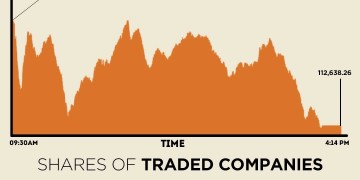 © Reuters. FILE PHOTO: Oil tanker is seen at sunset anchored off the Fos-Lavera oil hub near Marseille
© Reuters. FILE PHOTO: Oil tanker is seen at sunset anchored off the Fos-Lavera oil hub near MarseilleBy Amanda Cooper and Ayenat Mersie
NEW YORK/LONDON (Reuters) – Global oil markets have been roiled by a surprising divergence between the world’s major benchmarks, and its U.S. counterpart, which in recent days have traded at odds with one another, wrongfooting investors betting on the exact opposite.
Graphic – Brent soars, others lag: https://reut.rs/2JmAsvJ
Traders worldwide have been struggling to make sense of where oil prices are headed, juggling countervailing signals from major producers Saudi Arabia and Russia on the path for future OPEC supply, against renewed U.S. sanctions on Iran and Venezuela’s ongoing economic crisis.
The market expected OPEC, led by Saudi Arabia, to add to global supplies as sanctions reduce Iranian exports in coming months. But instead of bringing Brent closer in line with , the opposite has happened, roiling both futures trading and key physical grades.
On Thursday, U.S. crude futures traded as much as $11 below Brent , the deepest discount since early 2015. Traders say the tide of light sweet crude from the United States is threatening to swamp the global market.
That whipsawed traders in the last several days, as hedge funds and other money managers raised their bullish bets on U.S. crude in the week ended May 22 – while cutting long bets on Brent, the opposite of what has ended up happening.
“The market doesn’t know where the price of oil is going to be and probably doesn’t know where it should be, and so it’s open to some major price fluctuations,” said Richard Hastings, an independent analyst in Charlotte, North Carolina.
U.S. exports reached record highs of over 2.6 million barrels a day this month, as cargoes of light, sweet shale have muscled into refineries around the world, from China to northwest Europe.
Around the Atlantic Basin, Angolan and Nigerian crudes, both staples for Chinese and Indian refineries, are now selling slowly, undercut by U.S.-linked grades, traders said.
A swathe of maintenance at some of Asia’s large refineries means big buyers are not pushed to take cargoes of crude right now and can afford to be choosy, when so much is on offer. Independent Chinese refineries, known as teapots, have even started reselling cargoes of West African crude to buy cheaper Brazilian or U.S. oil, according to traders.
U.S. crude futures are being pulled down, in part, by the oil glut in the Permian shale basin, which currently produces more than 3 million barrels a day – nearly one-third of U.S. crude production, which hit a new record of 10.5 million bpd, according to U.S. Energy Department data released on Thursday.
“This was inevitable. There was way too much production growth for infrastructure to handle,” said Vikas Dwivedi, global oil and gas strategist at Macquarie in Houston.
Physical prices for these trapped crude grades such as WTI at Midland are now at their weakest levels in three-and-a-half years, trading as much as $13 below benchmark U.S. futures. That translates to a $23 to $25 discount to Brent.
But coastal U.S. grades are trading at multi-year highs, illustrating the demand globally for U.S. barrels. Coastal sour Mars traded at its strongest differential in more than three years on Thursday, while prices for coastal benchmark Light Louisiana Sweet were at their strongest differential in more than three years on Thursday.
LLS traded on Thursday at $9 more than U.S. futures – making it nearly comparable to Brent crude.
The European market has seen a sudden increase in the amount of crude stored on ships, often a sign of an oversupplied market, and that has pushed the North Sea grades that underpin the Brent price to multi-month lows, another reason the Brent futures price should have aligned itself more closely with U.S. crude.
Source: Investing.com




























